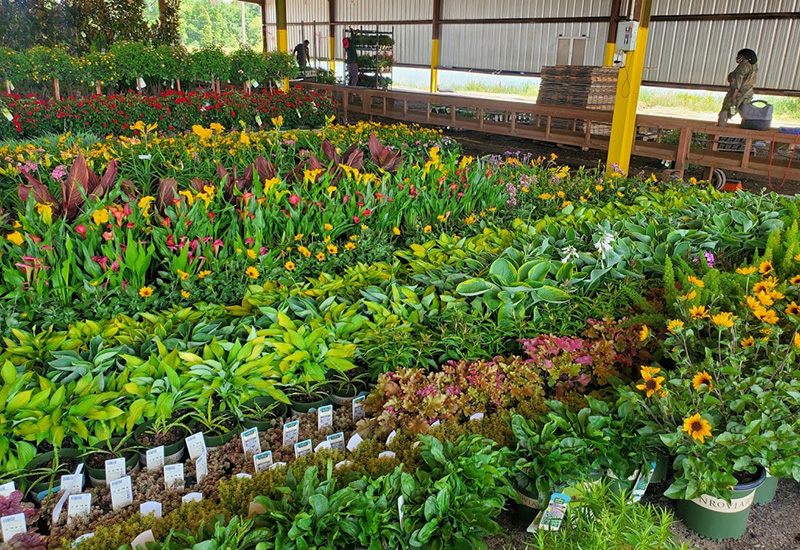
Forty under 40 perspectives: A day in the life of plant protection
In 2019, I joined the research department at Monrovia to focus on diagnosing diseases and performing trials on potting mixes, fertigation, biological control and new chemicals. This role gave me perspective on how much time and effort it takes to produce quality plants that reach Monrovia’s standards. A couple of years later, I was fortunate to join the plant protection team as a coach and make a bigger impact on the nursery while continuing to perform research with a more practical mindset.
 The plant protection team consists of coaches, scouts, weed control craftsmen and chemical applicators. This team is in charge of making sure every greenhouse and outdoor growing area is scouted at least once a month, and in most cases during the spring, the greenhouses are scouted weekly. The increased scouting is essential for an integrated pest management program to reduce unnecessary chemical applications.
The plant protection team consists of coaches, scouts, weed control craftsmen and chemical applicators. This team is in charge of making sure every greenhouse and outdoor growing area is scouted at least once a month, and in most cases during the spring, the greenhouses are scouted weekly. The increased scouting is essential for an integrated pest management program to reduce unnecessary chemical applications.
First stop of the morning is checking in with the spray team to make sure everyone is ready for the day and has everything they need. A major part of this check-in is going over the spray schedule and making sure they understand any specific notes about where and what they will be spraying. In certain situations, the notes may mention spraying a PGR on very specific varieties in the same greenhouse. They understand the importance of this, because of how differently plants respond to chemicals, especially PGRs.
The next stop is the shipping docks, where scouts, growers, sales and inventory are doing a final quality walk of plants that will be shipping out that morning. I will walk the docks making notes of any potential quality, pest or disease concerns to use as objectives for the scouts to investigate that morning. This is my favorite part of the day, not only because of the plants, but because the information that is shared here can set up the rest of my day.
The most important part of the dock walk is the conversations that come from the growers, sales and inventory teams. Communication between departments is crucial throughout the spring shipping season, since so much can change from day to day.
Up next, I meet with growers, inventory and sales to participate in a crop walk to make sure the crops are trending on time. After the walk through, depending on what is observed, we may alter irrigation run times, fertilizer rates, pruning or spray schedules. Sales will update us regarding geographic areas that could end up with an earlier or later sales window based on weather dictating a couple extra weeks of winter or early spring.
Before lunch, I will have a quick check-in with the scouts so they can share what they saw in the field compared to any quality concerns we noticed at the docks. This is a good time to get an update on other scout responsibilities, like pourthrough data where we track the pH and EC to ensure our plants are maintaining adequate nutrient levels in the potting mix. I can then make a spray schedule to address any urgent issues that show signs of impacting a large percentage of the crop. This spray schedule is sent to the growers and, in turn, they can suggest a preference to morning or afternoon spray in their area.
Back to the docks! After lunch, the docks have completely changed and the plants from the morning should be on their way to customers, so there is a whole new set of plants to check. The plant protection team will handle most scouting of the docks the rest of the day so the growers can focus their time with the plants.
Another part of our IPM program involves the application of predatory mites on select crops that seem to be magnets for twospotted spider mites. The package of predatory mites is usually delivered around lunch time and applied to plants within a couple of hours. We use two different species of predator mites, Amblyseius andersoni and Phytoseiulus persimilis. The andersoni is used more proactively and spread throughout the crops, while the persimilis is used as hot spot treatments when spider mites are found.
As the day finishes, the plant protection team will make one final quality walk of the docks and begin planning for the next day.









 Video Library
Video Library 


















